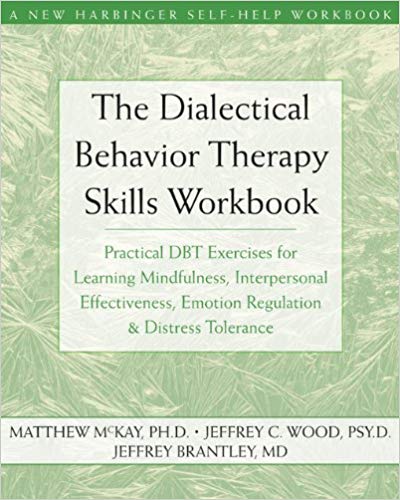A guide to recognizing the implications and symptoms of psychological trauma
Reflective Interdependence
We live in a universe that reflects our inner experiences onto the external stage of life. While you are perceiving the outside world as outside of you, it is simultaneously happening and being experienced inside of you. There is no experience outside of yourself- your neurology, your biology.
Accountability
Every day, there is more and more trauma making its way to the surface of our collective eyes and “I’s.” With this illumination, there ensues much emotional and psychological pain, but also hope for a better understanding and transformation of our ourselves. Now, this present moment, is the best time for self-reflection and self-leadership. Have you ever taken a moment to truly observe yourself? To truly understand why you do what you do? There is no time like the present to pause,
take a breath,
and observe.
What comes up for you?
Can you notice your thoughts without attaching to them? Notice them as clouds floating in the sky? Notice your body posture, your breathing, your feelings, your temperature, the sounds around you.
You are are beginning to observe yourself right in this present moment.
If being in stillness brings up more pain, frustration, anxiety, fear or depressive thoughts- that it is an indicator that psychological trauma may be present. Let’s learn more about trauma so we can learn more about ourselves.
The Trauma Stage
How do we know about implications of trauma? Short answer: Scientific brain scans, epigenetics, and decades of psychological, clinical observations and research.
How do/can we observe trauma? Short answer: By observing patterns that have reoccurred so many times in human beings that we can undoubtedly label them symptoms of trauma, such as: depression, anxiety, insomnia, night terrors, flashbacks, hyper-vigilance, aggression, mistrust, irritability, numbing, loss of interest, hopelessness, having little or no memories, chronic pain, headaches, substance abuse, addiction, self-destructive behavior, loss of sense of “Who I Am.” (Adapted from Fisher, Bremner & Marmer, 2007, 1998).
At first glance, how many of these listed patterns, or symptoms, regularly show up in your life experience? Two? Three? Five? All of them? You’re not alone.
Brain Power
Let’s take a look at how trauma affects the wiring and functioning of the brain and the autonomic nervous system. In being able to identify bodily sensations, intrusive emotions and maladaptive cognitive patterns, one can begin to understand the nature of their Being and their own traumatic symptoms. We will focus on the Triune (3 part) Brain, coined by Physician and neuroscientist Dr. Paul MacLean, which is a simplistic, yet helpful explanation of how certain parts of the brain work and have evolved over time.
- Reptilian Brain: our oldest brain made up of the brainstem and cerebellum. It’s responsible for our survival mechanisms and affecting vital functions such as heart rate, body temperature and breathing.
- Mammalian Brain: also known as the Limbic System. It is non-verbal and contains emotional, relational, feeling and traumatic memories. It contains the amygdala, which is the emotional memory center and which “sets off an alarm” when triggered, to act. The alarm can go off in relation to real or perceived danger, and for trauma survivors, this system is very active and visceral because they will experience the trauma as if the danger were happening NOW.
- Neofrontal Cortex: The frontal lobes are known as the thinking brain and are responsible for executive functioning, reasoning, problem solving, critical thinking, being able to verbalize thoughts, feelings. It helps us remember events and facts. This is the NEWEST part of our evolutionary brain and has given us incredible advancement over other mammals. This part of the brain is not fully formed until the age of 25. Important note: The frontal lobes are OFFLINE- inaccessible when a person is experiencing a traumatic event, symptoms, or past memory. As psychiatrist and leading trauma expert, Dr. Bessel Van der Kolk states, “We remember trauma with our feelings and our bodies.”
In other words, trauma can invoke implicit memory.
“Trauma Survivors Have Symptoms Instead of Memories”
(Mary R. Harvey, 1990)
We experience these symptoms on a spectrum, some are more traumatized than others- having experienced horrific atrocities and violence, some use their intellect to avoid or deny they are having dysregulating experiences at all (I’ll discuss dissociation and coping mechanisms in a forthcoming post) and some have integrated, or transcended, these painful experiences and symptoms to live more balanced, happier lives.
We can experience trauma symptoms and attachment/relational wounding on a daily basis. We experience these symptoms internally, externally, consciously, and most importantly and pervasively: unconsciously. By unconsciously, I mean that its effects are beyond our conscious awareness (we don’t know it’s happening while in a waking state, in our field of discriminatory awareness), yet we still experience these symptoms and have automatic, physiological, engrained reactions that have subtlety become mechanisms of everyday, “normal” life. Our reactions become habitual, normalized to our physiology.
There are many types of memory, but two we will go into are explicit and implicit. Explicit memory is associated with conscious recollection and is often what we imagine when we think of memory, like remembering facts or situations. Implicit memory occurs unconsciously and is often associated with thoughts, feelings and behaviors.
Implicit Memory in Relation to Trauma
Implicit memories can be like “feeling flashbacks” when the autonomic nervous system perceives an attack it hijacks the frontal lobes, operates in the limbic system, and replicates physical sensations and feelings associated to past experiences of trauma or terror. So even if the person can’t remember visually in their mind’s eye, the trauma, the body always remembers. The illusion here is the person reacting, may think they are “in control” of these thoughts and feelings, when in fact they have no control of its uprising, like weeds in a grassy field, mistaking the weeds of their experience as the solid, grassy field of foundation. It is a habitual intrusion. It is reactionary.
The world we see and experience is a testament to pervasive, manipulated and exploited psychological trauma.
The world stage is Trauma.
There is an intelligence to emotional and physical sensations that is discounted by those wanting to appeal to the ego, the “intellectual” in all of us: it is that our cerebral, thinking minds are SO superior, feelings don’t matter. When in fact these feelings and physical sensations are communicating and providing valuable information. If you don’t know how to interpret this information (especially if it’s unpleasant) you are more likely to dismiss and discount it. This reinforces the repetition of traumatic patterns.
So the next time you feel something, pause and pay attention to it. What thought accompanies that feeling? What pattern do you go into? How is your trauma affecting you and your loved ones… right now? What can you become curious about right now? Pause again. Breathe in the 2–1 yogic cycle which calms your nervous system. Become the observer standing outside of your inner stage and watching what is going on, trying to understand what is really happening and how it is affecting you.
If you take away one thing from this article, just remember: a curious mind will unveil the stages of trauma and lead you home.
Lilit Arvahi, MFT
Additional Resources on affects of Trauma:
Adverse Childhood Experiences Study on Trauma and its affect on health.


